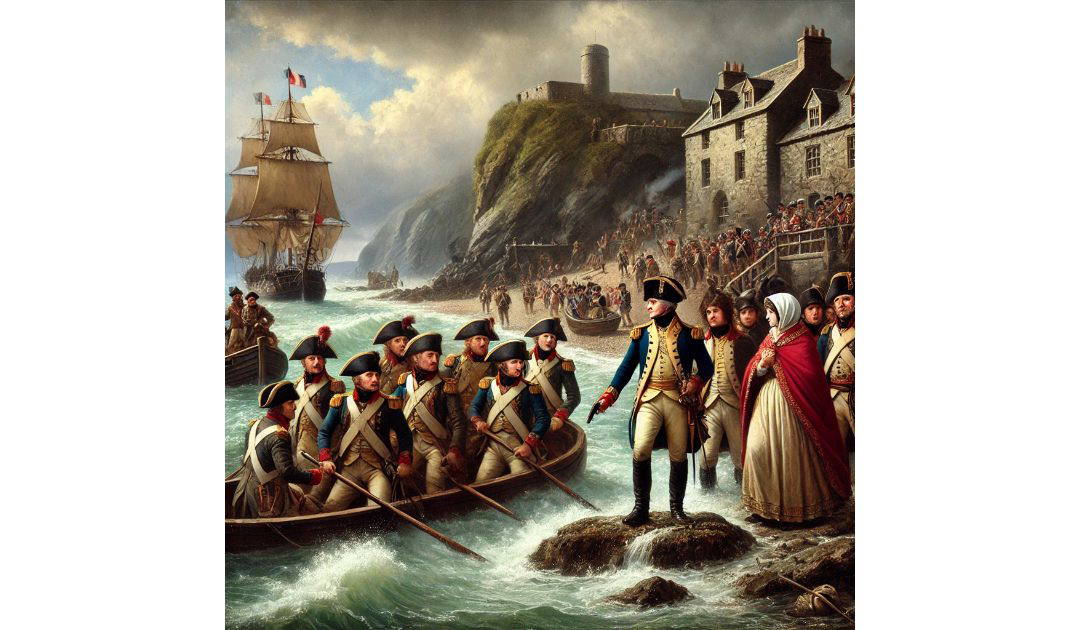On the 24th of February 1797 a French invasion force, of between one and two thousand men, surrendered to Welsh women in tall black hats at Goodwick Sands near Fishguard.
The French invasion at Goodwick Sands was the last time a foreign military force attempted to invade Britain. It was part of a larger French strategy to destabilise Britain by supporting Irish rebels and causing internal chaos. Despite being a significant moment in British history, the invasion was a poorly planned and executed affair that ended in failure.
At the time, Britain and France were at war during the French Revolutionary Wars (1792 – 1802). The French Directory, the ruling government of France, wanted to weaken Britain by attacking its vulnerable points and supporting uprisings. A three-pronged invasion was planned:
- A main invasion of Ireland to aid Irish rebels (which failed due to storms).
- A diversionary attack in northern England (which never materialised).
- A smaller invasion of Wales to incite local unrest and loot supplies.
The invasion of Wales was led by Colonel William Tate, an Irish-American soldier in French service, commanding a force of about 1,400 troops, including French regulars, convicts, and ex-prisoners.
On the 22nd of February 22, 1797, Tate’s force landed at Carregwastad Point, near Fishguard, Wales. However, from the beginning, the invasion was chaotic. Poor planning and bad weather made the landing difficult. Many of the troops were undisciplined criminals rather than experienced soldiers, and local militias and volunteers quickly organised to resist the invaders. Tate and his men moved inland toward Goodwick Sands. However, they struggled with a lack of supplies and discipline.
Lord Cawdor led the local militia forces, mainly Welsh farmers armed with muskets and farm tools. Lead was stripped from the roof of St. David’s cathedral to make bullets. An engineer by the name of Whitesides, took command of a group of sailors in Solva and armed them with whatever weapons were available, then marched them towards Fishguard.
What about the women in tall black hats, I hear you ask. Jemima Nicholas was either a cobbler, or a cobbler’s wife, from Fishguard. On hearing of the invasion she is said to have rounded up as many local women as she could and had them dress in black cloaks and tall black hats. She then marched them around and around a hill to give the appearance of a much larger force of infantry.
On the 24th of February, 1797, just two days after landing, Tate surrendered unconditionally at Goodwick Sands. The British took 1,300 prisoners and successfully repelled the invasion without significant bloodshed. The last invasion of Britain had been defeated.
Jemima Nicholas sounds rather like Maria Standen, heroine of the Sir Anthony Standen Adventures, from Fire and Earth onwards.

